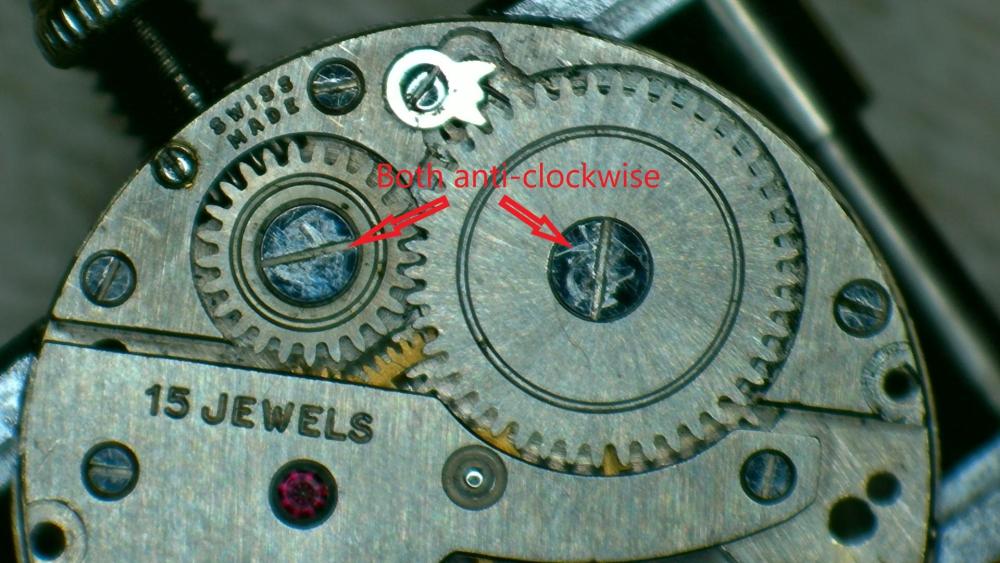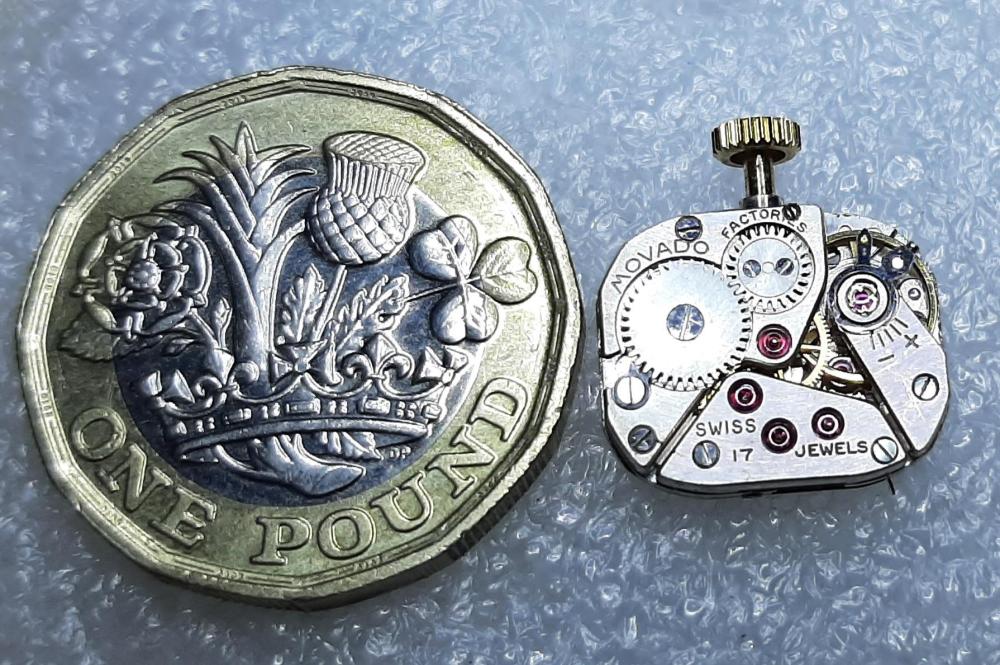Leaderboard
Popular Content
Showing content with the highest reputation on 11/19/23 in all areas
-
Been to a few AI seminars over the past couple of months. AI responses are only as good as the questions that are asked, or the prompts that companies present to the users. One of the up and coming jobs is that of a prompt writer. Companies can guide end users down certain avenues by the use of well crafted prompts. However, therein lies the danger. Companies and governments can influence answers to what appear to be innocuous prompts. There is an opportunity for AI to take away some of the more mundane tasks - e.g., writing Powerpoint presentations - but it certainly needs controlling and monitoring. The real problem is when governments start to legislate the control and monitoring for their own benefit. It's certainly not going to go away.2 points
-
Out of couriosity I asked ChatGPT the following question: „What is beat error in watch making?“ The answer came immediately: „In watchmaking, beat error refers to the discrepancy in the timekeeping of a mechanical watch caused by the variations in the oscillation of the balance wheel. It is measured in milliseconds per day and is affected by factors such as the balance spring, the balance wheel, and the escapement. The goal of a watchmaker is to minimize beat error to ensure accurate timekeeping.“ What do you think?1 point
-
You must have browsed through my post in a hurry to get to the next post quick. Notice I say " the watch " in dynamic state , not "the oscilator" , as you move your wrist you subject the oscilator to angular acceleration/ declerate, furthure the watch goes through infinate positions on wrist. On tg , however, the watch is sitting still, and is not subjected to external forces, other than gravity which is constant and not dynamic. So , dynamic external forces don't come into the picture with the watch in static position, namely on bench or tg. You keep forgetting that I am non native English speaker matey. Rgds1 point
-
I agree. One of the problems is that the mundane and basic tasks are good trainers of the lower level workers to then move up after learning the basics. Unless the bots can be trained to train the workers, research and writing skills will be down to fact checking the bots by the subject matter experts.1 point
-
Well, it is just drilling a hole, and yes, it is not so simple. But, there is a simple way that it is done with guaranteed good result.1 point
-
1 point
-
Sorry, but there are no spare parts for suh old watches. Restoring them, if replacement of parts needed, means making the parts, so one must be able do do this. The broken jewels are rolled in jewel settings, now the way to restore the bearings is to make new settings with the same sizes. Modern stones that are press-fitted can be used, this is the easies way to solve the problem. Of course, the balance staff has no survived, if the jewels broke this way. At least, the hairspring side pivot looks badly bent on the picture, and it will probably snap if tryed to be strightened. So, may be turning of balance staff is needed too.1 point
-
I did a DIY cleaning machine based on a laboratory stirring motor that has been working well for me. Mine has a turntable to hold all of the jars and heater, but really all you need is the stirring motor, parts basket and some mason jars. Some people use hair dryers or food dehydrators for drying parts. There are recipes for cleaning solutions that you can find, but I found that the commercial cleaning and rinse solutions are worth the expense as they do a much better job. I don't put the balance or pallet fork through the cleaner. I clean those separately. I also don't put the fine wire springs through the cleaner, as those can work their way out of the mesh parts baskets. I also have an ultrasonic machine, but I use that for cleaning case parts and bands only.1 point
-
Isn't the rate of a watch in static state independent of hairspring's grade? I believe the grade comes into effect only in dynamic state . ( on wrist or in pocket ). Rgds1 point
-
1 point
-
Just curious, what grade hairspring is in Vostok ?1 point
-
Dial up constantly shows higher amplitude relative to other positions ( low) , I suspect balance jewels on mainplate side just oiled but not cleaned. Advice from klassiker sticks to mind, how about doing the next service yourself, stick around this forum, many have and learnt. Rgds1 point
-
That's a very interesting question. I don't know the answer but I would guess not. As I understand it, isochronism only means that the frequency is independent of the amplitude. The amount of energy from the impulse pin hitting the fork slot must be less when the amplitude is low and that, I assume, affects the timekeeping but is mostly negligible I would guess. So the results (average rate) of testing the watch. Each number represents a test of a full wound, the same temperature, resting on its back for about 9 hours. Vostok 2416b: -0.8, -5.3, -0.4, -2.4, -3,5 In my eyes, that looks pretty normal and in line with what I would expect from a healthy 2416b. Given these ideal conditions I would expect the rate to only differ by a few tenths of a second but not even my best running timepiece, an ETA 2804-2, can accomplish that.1 point
-
Correct Schlenker & Kienzle so it is German. This movement is from a wall clock. It is a hell of a mess. Its 8 day duration strike on a count wheel. Be careful with the click springs as they tend to get brittle with age so they easily split.1 point
-
I know I'm getting on a bit in life. I have never heard of ChatGPT.1 point
-
I meant tell AmScope you got it used, and ask if they'll sell you parts to repair it back to spec.1 point
-
1 point
-
1 point
-
Why don't detach the balance & remove the end stone carrier and show us picture of whats happened. A picture of the keyless and bridge layout be nice too. Rgds1 point
-
1 point
-
1 point
-
1 point
-
The crown wheel screws are always (?) reverse threaded (if it's only one screw in the centre), or they would tend to unscrew as the crown turns. The Barrel screw is almost always a normal thread, though a few are reverse. You can try them either way if you turn the screwdriver a tiny amount. I've just finished working on a tiny one too. You get used to it1 point
-
1 point
-
Hello and welcome to the forum. Good on you with the Timex. Keeping a legend alive.1 point
-
Thank you for your introduction and welcome to this friendly forum. We all look forward to your contributions and continued involvement.1 point
-
Welcome from across the pond. Lots of friendly people here who are experts and willing to give us mortals help. Timex. Wow! you are a tough one. Good to know you.1 point
-
1 point
-
1 point
-
Reverse of this, I used the way too big oiler that came in a set to straighten the grooves in scratched/skipping vinyl records. I filed it down to a profile with something like a knife edge on one side, and a hook on the other. That way, once I find the skipping section, I can push or pull the ridges between the grooves straight so that the needle can pass cleanly through. The end result will still have a bit of a scratch to it as it passes the damaged section, but it'll play again just fine!1 point
-
All I know is I never wanted to get into watchmaking at all, but there was simply too much beat error in the world. It was, like, everywhere I looked. I didn't qualify for military service, so I felt it my duty to do my small part to minimize whatever beat error I could.1 point
-
It's very likely that the watch is basically OK and just needs a good clean and some fresh oil. This is a skilled job and takes several hours and a lot of expensive equipment to do properly, so is not cheap. At a rough guess, the watch is worth about the same as the cost of a proper service. Maybe this is why the shop you went to did not do it, but I find it odd that they didn't give you the option. In this condition, the watch will either stop running soon, or keep running and wear itself out.1 point














